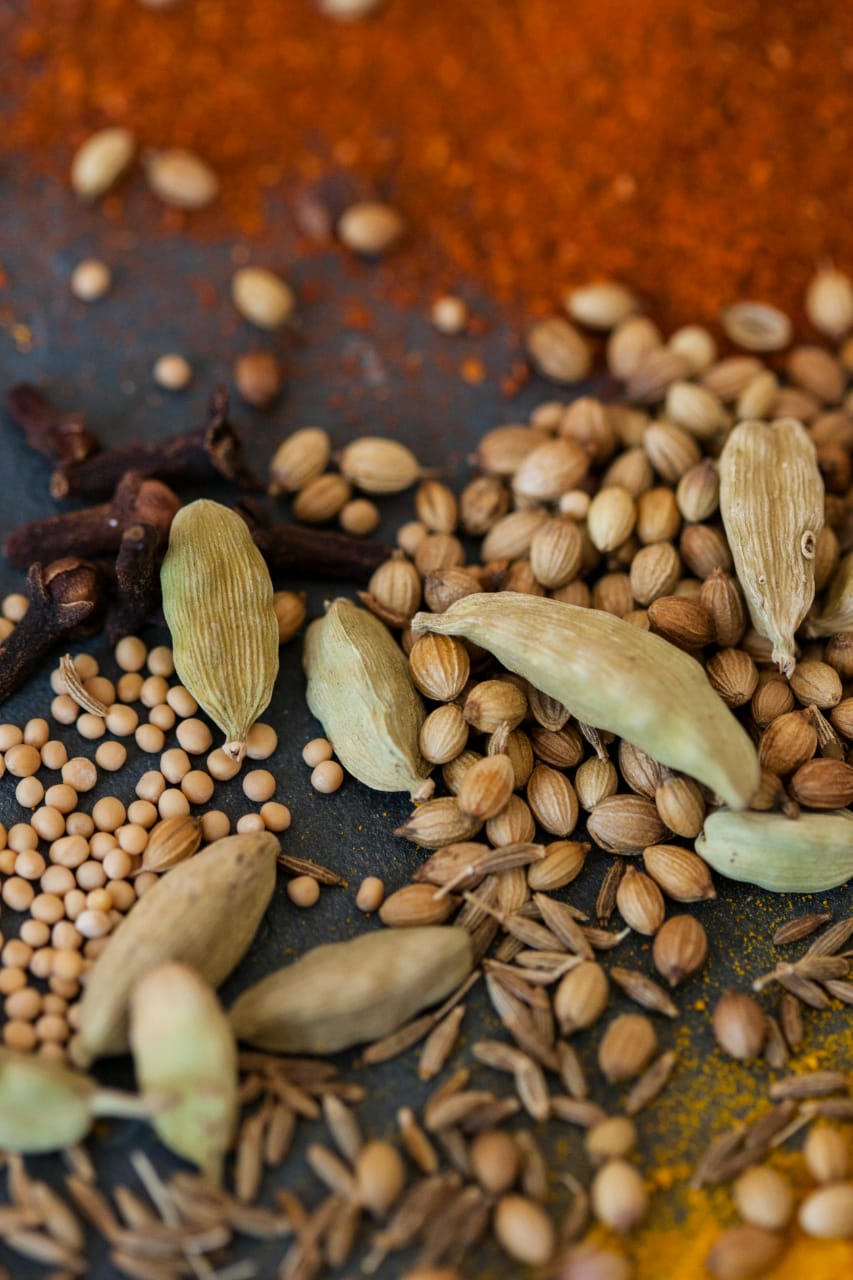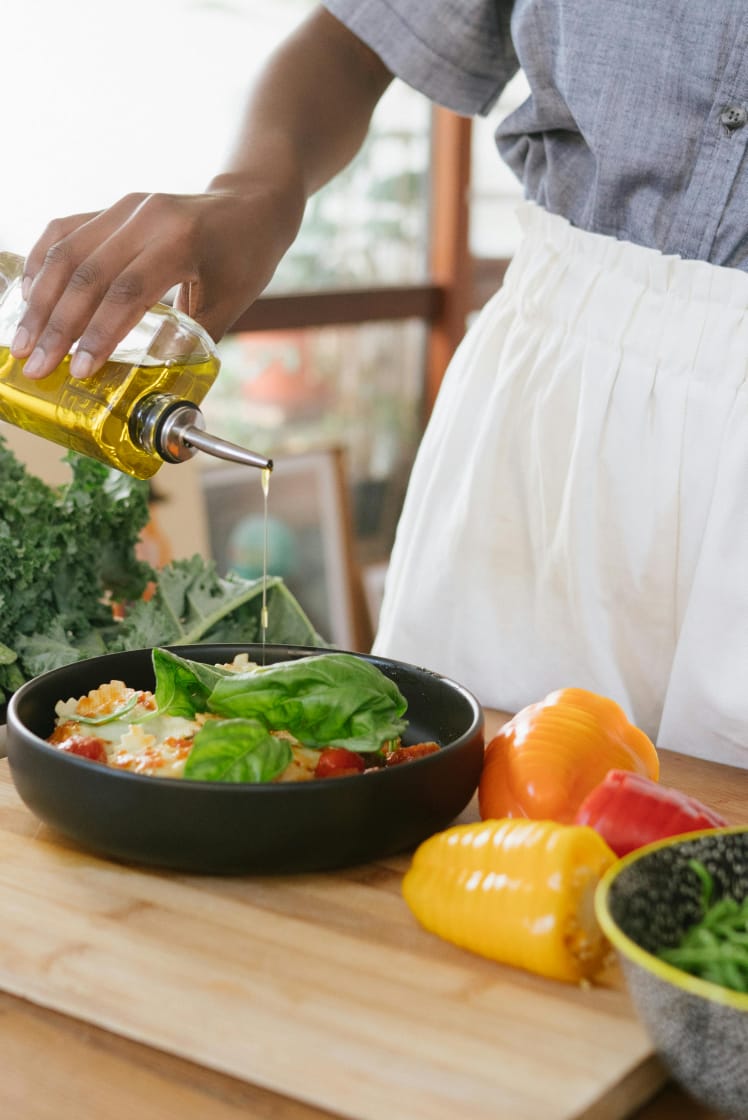Food and emotions go together. Food is an emotion for us and there’s a popular saying among our grandmas that unless you feel right, your cooking won’t be right. That’s where the balancing of the spices comes into play. While cooking in the kitchen, we play with different ingredients, spices (dry or green), the temperature of the gas oven, salt, sugar, tangs, and zings according to our mood to cook. The same dish can taste umami when we cook with an upbeat mood and bland when done with disinterest. This philosophy is the same across all cuisines.
.jpeg)
So, in case the food doesn’t turn out well after a cooking session with a disastrous mood, we need to balance the taste to make it palatable, and there comes the art of balancing the flavours. Normally, we have to balance the following tastes in our food: sourness, bitterness, sweetness, savoury and umami, so that the food we prepare turns out to be a treat for our souls. In Indian food, you can come across various flavours created by combining different spices. Probably, Keralan cuisine can give you a wholesome idea of how spices are combined and balanced in Indian food. Therefore, we will be sharing with you some of the main spices used in preparing Kerala’s traditional food and how they influence and balance the flavours of the food.
Coconut Milk
First, let us come to coconuts. Our Kerala has got its name from coconuts. The ancient name ‘Keralam’ means ‘A Land of Coconuts’. We use coconut as a principal ingredient in almost all our meals. The coconut milk, which is extracted by grating the coconut and pouring in some lukewarm water, adds richness to our dishes with its creamy texture and pleasant sweetness. Coconut milk is used as the gravy base in preparations like Duck Mappas, Fish Moilee, and some stews. After flavouring the oil with dry spices and cooking the vegetables or meat, we tend to add the coconut milk at the final stage to add a subtle sweetness and a creamy richness, balancing the strong flavour of any spices. While adding the coconut milk, we also reduce the heat of the gas oven and usually simmer it till the gravy thickens because the high temperature may break up the particles and disturb the texture of the gravy.
Kudam Puli
Kudam Puli or Malabar Tamarind, is a souring agent. It is used to add sourness to any dish. Adding Kudam Puli saves a dish from its blandness. Also, most dishes in Kerala can’t be done without Kudam Puli because the sourness saves them from getting spoiled due to the high heat prevailing in the region. We use Kudam Puli to add sourness to fish, eggs, and meat curries. The sourness cuts through the hotness added by chillies, balances salt, and gives an umami flavour to the curries. For hot, sultry days, Kudam Puli Rasam is an absolute favourite among us, the locals. Kudam Puli is first soaked in water so that its sourness gets well blended and in the later stage of cooking, the Kudam Puli water is added to the gravy. Maybe a bit of sugar is added later on so that the sourness and sweetness get well balanced in the curries.

Asafoetida
Asafoetida is commonly known as ‘Hing’ in India. It has a pungent taste and acts as a flavour enhancer. Adding a bit of Hing while flavouring the oil while cooking brings in zing. This flavour pairs well with the pure vegetarian dishes, which are strictly prepared with mustard seeds, curry leaves and ginger paste only.
Pearl Onions
Pearl Onions are small, pearl-shaped onions used as a green spice in Kerala meal preparations. The pearl onions or shallots give a pungent smell and flavour, along with a subtle sweetness, to the curry being prepared. The shallots are used in preparing Chammanthi or Chutneys, in meat curries mainly and also in some preparations of eggs and fish. The pearl onions are also known for their cooling effect on the human body during the summers in Kerala.
Garam Masala
Garam Masala is a mix of spices and herbs like cinnamon, cardamom, star anise, nutmeg, mace, clove, and bay leaves that add warmth and balance to the flavour of the curries. Garam Masala adds aroma, too, to the curries. The flavour of any dish gets enhanced if roasted and freshly ground Garam Masala is added to it. It also cuts through any bitterness from any spice added in the early stages of the cooking. It's quite thrilling to know that every container of freshly ground Garam Masala in each Indian home is different from the others. This uniqueness is due to the change in proportions of the whole spices added while roasting the Garam Masala. If you want to increase the aroma, you have to increase the proportion of aromatic whole spices like cinnamon and nutmeg in the mixture. If you want to enhance the flavour to another level, you have to add every whole spice in similar proportions.

The spice proportions don’t have a recipe and that’s the magic of it. The Garam Masala prepared by you for your kitchen will just be a true version of your preferences and your take on any cuisine that requires the addition of Garam Masala while cooking any dish. We feel that cooking is like an experiment that might have different results and we can always get it right by balancing the flavours.
.jpeg)
There are more permutations and combinations to the art of balancing flavours, and in our small cooking studio situated near the Kumarakom Backwaters, we are trying to explore more about the art of balancing the spices. We humbly share the knowledge we've gained through our cooking sessions to assist you in better balancing the flavours in your dishes. We invite you to join us at any time to explore the world of tastes, refine your flavour-balancing skills, and embark on unique culinary journeys.


The Story of Wonderwerk: From Concept to Creation
How tapioca became Kerala's symbol of food sustainability
Beyond Karimeen Pollichathu: 5 Traditional Spicy Fish Dishes from the Kumarakom Backwaters of Kerala That Celebrate The Culinary Diversity of Kerala